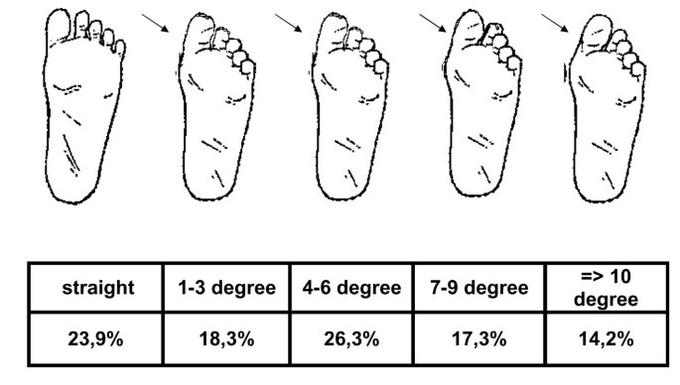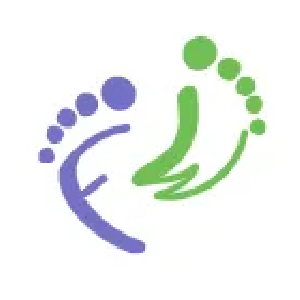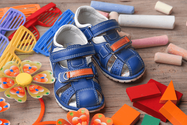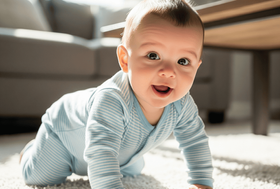How to Tell If Your Baby's Shoes Are Too Small: 5 Signs
Are those adorable shoes doing more harm than good? We break down what to watch for and how to ensure the right fit.
Published April 24, 2025
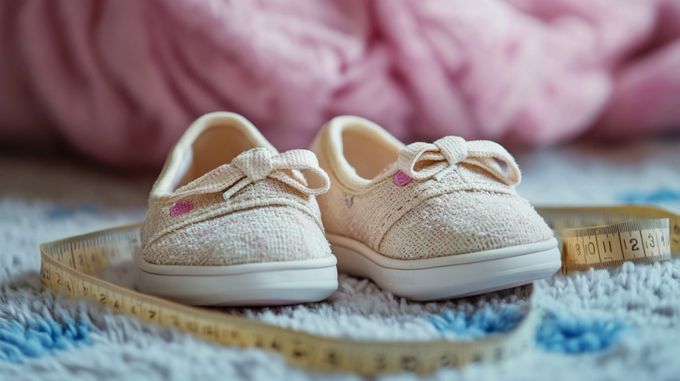
Proper shoe fit matters more than you might think, especially during the earliest years when your baby is learning to stand, walk, and explore the world. Poorly fitting shoes can cause short-term discomfort and affect long-term foot development.
Below, we’ll walk you through everything you need to know: from growth milestones to the sneaky signs that your child’s shoes no longer fit.
» Support your baby's feet with our prewalker collection!
Why Proper Shoe Fit Matters in Early Childhood
Rapid Foot Growth
Your baby’s feet grow fast—about half a size every 3 to 4 months until the age of 3, and roughly one size every 6 months after that. Because of this, shoes that once fit well can quickly become restrictive.
Proper fit supports mobility and posture, while allowing space for the bones and muscles to move and grow naturally.
Developing Foot Arch
The arch of the foot doesn’t fully develop until around 6 years of age. Until then, flexible support is key. Shoes that are too tight or shaped incorrectly can interfere with this process and potentially lead to flat feet or inward rolling (pronation).
Choosing a shoe with a soft, roomy fit helps the arch and supporting muscles grow properly.
Developing Bones
Babies’ feet contain soft, malleable bones that don’t fully ossify until their teenage years. Tight shoes or narrow toe boxes can put pressure on these delicate structures.
This can cause joint strain, poor alignment, and even affect how your child walks. Avoid styles like ballerina shoes with pointed fronts that crowd growing toes.
» Learn how to determine if your child is walking correctly
What Happens When Baby Shoes Are Too Small?
Short-Term Effects
- Refusal to Wear Shoes: If your baby suddenly fusses whenever it’s time to put on shoes, they might be trying to tell you they’re too tight.
- Reluctance to Play: Children may limit their activity if movement feels restricted. Avoiding climbing, running, or walking could point to sore feet.
- Blisters and Rashes: Tight shoes can cause rubbing and pressure spots. These lead to skin irritation, which may become more serious problems if ignored.
» Parents also asked: Should you pop your child's blisters?
Long-Term Effects
- Foot Deformities: Wearing small or ill-fitting shoes regularly can contribute to bunions, hammertoes, and flat feet later on.
- Nerve Damage: Compressed nerves can cause tingling or numbness. Over time, this might affect your child’s ability to move comfortably or participate in play.
» Learn more about the effects of tight shoes on kids feet
Signs Your Baby’s Shoes Are Too Small
1. Visible Skin Marks After Taking the Shoes Off
Redness across the top of the toes or near straps and zippers is an early sign of pressure. Blisters often form on the back of the heel or the little toe. Over time, repeated irritation can cause darker patches (hyperpigmentation), flaky skin, or even hard calluses.
2. Toes Are Curling or Overlapping
When shoes are too short or narrow, toes may curl downwards or crowd together. In some cases, this results in one toe overlapping another. If toes remain curled after taking the shoes off, it’s a clear sign of muscle tension due to lack of space.
Hallux valgus—a condition where the big toe curves inwards—can also develop from long-term pressure.
3. Refusal to Wear the Shoes
Babies and toddlers may resist putting on shoes altogether. They might cry, kick, or pull at them as soon as they’re fastened. Others may constantly ask to be carried or remove their shoes during outings.
Older toddlers might even try to adjust the fit themselves by loosening fasteners or partially removing the shoe.
» Here are some tips for getting your child excited to wear shoes
4. Changes in Walking or Standing
Look out for limping, dragging feet, or toe-walking. These could be signs that your baby is trying to ease pressure or avoid discomfort.
Some children may also bend their knees slightly when walking, which helps shift pressure away from the heel. If your baby starts preferring crawling again, it may be time to check their shoes.
5. Difficulty Putting the Shoes On
If you have to push hard to get the shoes on, they’re probably too small. Fasteners like Velcro or zips that no longer close easily are another warning sign.
In open shoes, you might notice toes sticking out or the sides of the foot bulging. In closed shoes, look for overstretched fabric or toe outlines showing through the upper.
» Parents also asked: How much wiggle room is needed in kids' shoes?
Subtle, Easy-To-Miss Signs to Watch For
Some of these subtle symptoms can be mistaken for general fussiness or developmental delays.
- General Irritability: If your baby seems especially cranky during or after walks, check the shoes.
- Avoiding Physical Activity: Crawling or walking less than usual might not be laziness—it could be foot discomfort.
- “Clinginess”: A baby who suddenly wants to be carried all the time could be signalling that walking hurts.
- Suspected Delays: Toe-walking or tip-toeing could also be misread as a developmental red flag when it's actually a footwear issue.
What Should a Well-Fitting Shoe Feel Like?
A properly fitting baby or toddler shoe should feel snug but not tight. There should be about a thumb’s width (roughly 1.25 cm) of space between your child’s longest toe and the front of the shoe.
The heel should stay in place without slipping, and the sole should bend at the ball of the foot—not the arch. Most importantly, shoes should feel comfortable from the start. If they need to be “broken in,” they’re not the right fit.
» Find out more about how your toddler's shoes should fit
Tips for Checking Shoe Fit Year-Round
Tip 1: Check Fit With Socks On
Always check shoe fit with the same type of socks your child will wear day to day. Thicker winter socks can make a shoe feel tighter than it did in summer.
Tip 2: Check at the End of the Day
Feet swell slightly throughout the day. Try shoes on in the afternoon when your baby’s feet are at their largest. This helps prevent buying shoes that are just a touch too snug.
Tip 3: Choose Adjustable Closures
Shoes with Velcro, zips, or elastic laces offer flexibility for growing feet and are easier to put on, especially if your baby has a high instep or slightly wider feet.
» Here's how often you should replace your child's shoes
When to See a Paediatrician or Podiatrist
Some shoe or foot issues need a closer look. Seek help if:
- Red marks, blisters, or shiny patches appear regularly and don’t fade within 30 minutes.
- Your baby has consistent walking issues like toe-walking or limping that don’t improve with new shoes.
- You notice one foot developing differently to the other—either in size, shape, or walking pattern.
- Your baby shows frequent foot-related fussiness with no obvious cause.
Tiny toes, big impact
The right shoes do more than look cute—they help your baby walk, balance, and grow with confidence. Poor fit can lead to discomfort or even affect how their feet develop over time.
At home, barefoot can be a great choice. It helps build strength and coordination, and lets your little one get used to feeling different textures underfoot. But once you're out exploring, well-fitting shoes give little feet the support and protection they need.
Watch for the signs—red marks, curling toes, or walking changes. A comfy, flexible shoe helps your baby move naturally and happily through every stage.
» Explore our prewalkers collection to find the perfect fit for your little one.
